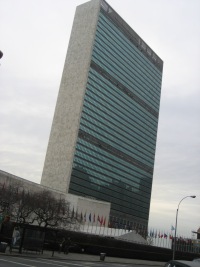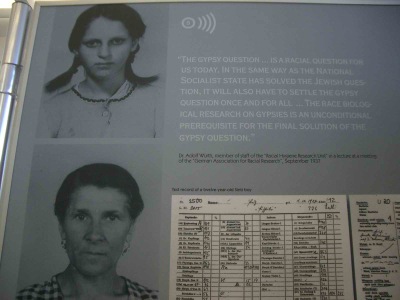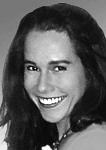UN Holocaust Events Do Not Ignore Roma Completely
“The Gypsies had been murdered in a proportion similar to the Jews: about 80% of them in the area of the countries which were occupied by the Nazis.”
Simon Wiesenthal, in a letter to Elie Wiesel dated December 14th, 1984.
"The genocide of the Sinti and Roma was carried out from the same motive of racial mania, with the same premeditation, with the same wish for the systematic and total extermination as the genocide of the Jews."
Roman Herzog, former German president (March 16, 1997)
To date, there has been no Romani speaker at the annual Holocaust Remembrance organized and hosted by the UN Headquarters in New York. When Romani leaders and other people took notice this year and wrote to the UN in protest, they were answered - if at all - indirectly, as if there were nothing wrong with this picture. There was no actual substantive response. UN representatives responded to the letters by stating, among a few other things, that only two years ago a delegation of Roma and Sinti was received at the UN. A traveling exhibit on the Romani Holocaust and Persecution was also displayed for more than three weeks in one of the UN buildings. (This high-quality project had originated at the Documentation and Cultural Centre of German Sinti and Roma.)

Separate and Unequal
Moreover, we were assured that the Hungarian Mission at the UN was hosting another event this year, the opening of what the UN Outreach Programme advertised as "'Roads to death: The Pharrajimos in Hungary', an exhibition on the persecution and murder of the Roma and Sinti." This could have been a step in the right direction, especially since two Romani musicians, along with a Romani politician from Hungary, were invited to participate.
As it turned out, however, the opening event, which I attended, had precious little educational value about any issues actually connected to Roma and Sinti as an entire group. The exhibit was well prepared overall, but it covered the "one-fifth of Hungarian Roma who perished in the Holocaust," nothing less and nothing more. A much wider historical and social context could easily have been provided. Somewhere on the display panels, for example, there might have been a mention of the countries in which nearly all Roma and Sinti were murdered.
There might have been some indication, within the exhibit or in the accompanying glossy brochure, of the staggering proportions of Romani families that disappeared in the war: half a million, perhaps more, but certainly more than one-fifth of the total Romani population. Most importantly, the exhibit would have been stronger had it touched on the subject of how present-day Roma and Sinti are affected by neo-Nazi and similar ideologies. But none of these omissions would have posed such a problem if this hadn't been the only chance for Romani representation during several days of Holocaust-related UN programming.
As it was, the only Romani voice present seemed to be little more than a token at the end of this lengthy opening event. Laszlo Teleki's remarks – of necessity, by that point – were very brief, and I happen to know that his political position prevented him from saying anything too "unpleasant," anyway.
With the exception of a few sentences authored by Istvan Hiller, the Hungarian Minister of Education and Culture, the speeches were, for the most part, characterized by vague rhetoric and by the exclusion of references to Romani people. Even more bizarre was the organizers' choice of documentary film to be screened. It was devoid of text or narration. It clearly showed a number of Jewish victims, whereas it included not a single perceptible allusion to Romani suffering.
The attendees were not many, perhaps seventy (as opposed to the projected 1600 at the main event). The opening was by invitation only. Not counting the modest number of diverse dignitaries, the audience was primarily formed by Hungarian speakers. One of them, a professor at New York University, said an entire sentence to me in Hungarian before I managed to excuse myself for not knowing the language. "You don't?" He seemed very surprised. "Then what is your connection to this?"
Indeed. What person from the general public would bother to come learn about the murder of some Hungarian Gypsies, especially if he or she knew ahead of time how little educational value the event as a whole would provide?
The catered reception that followed could rival even the poshest four-course wedding banquet. Thus, moving as the exhibit itself is, I fear that the invited guests will have more vivid memories from the closing of the program than from the small amount of relevant information they learned during it.
A Painful Reminder
Holocaust commemorations are designed to be painful, and they should be. In addition, they can provide either partial catharsis or an even deeper sense of injustice. Yesterday's event was entitled, of all things, "An Authentic Basis for Hope: Holocaust Remembrance and Education." Unfortunately, it was yet another missed opportunity for just that –education. As the direct descendant of Holocaust victims as well as some of the very few, extremely lucky Romani survivors who made it through the war in what is now the Czech Republic, I cannot help but squirm at a ceremony such as yesterday's program at the UN. Speech after speech, testimony after testimony, performance after performance, the members of my nearly destroyed family are not deemed worthy of representation.
It is to the UN's credit that the ceremony at least briefly acknowledged the fact that Roma and Sinti were the only other group, besides Jews, that was slated for complete extermination by the Nazis. This, however, was the only "substantial" mention of Romani victims in the entire, rather long and massive event. (Incidentally, I regret to say that phrases such as "Jews and countless other minorities" don't quite suffice in this regard.) There was certainly a far greater amount of "Jewish" content at the previous day's "Romani" event than there was in reference to Romanies – or any other group of Holocaust victims, for that matter – here on the "main stage."
It all amounted to a stinging reminder that Roma and Sinti, who were a much smaller population than Jews to begin with but who suffered equally, still lack enough of a voice to be asked to deliver even the briefest remark or intone a single stanza of a Romani-language Holocaust song.
In their response to written Romani protests, the organizing committee for the UN's annual observance concluded by saying: "There are many issues to be addressed in Holocaust remembrance and we are doing our best to present as many as we can. We will continue to include the Roma and Sinti in our work. Thank you for your comments, which we have taken to heart." The first part of this statement could not have rung more hollow after yesterday's remembrance program. It is a very good sign, however, that the Outreach Programme's Kimberly Mann suggested we meet to discuss future Holocaust commemoration events, following a letter I sent yesterday. She seemed willing to secure the participation of Romani speakers and performers, and for this I am grateful.
Along with Romani scholars and activists who have worked for many years to secure adequate Romani representation in Holocaust programming, I look forward to assisting in the involvement of Romani voices at these events and in their related materials. I hope that other Roma and Sinti will continue to make the UN's as well as other remembrance events and materials more relevant to the historical record and to today's world. Please send your suggestions to Ms. Mann at mann@un.org (NOT kmann@un.org!).
"They burned my whole family, so let me be burned, too."
Jozef Holomek, my great-grandfather, asking his children to break Romani law and have him cremated in the place of a traditional burial.

From the mobile exhibit of the Documentation and Cultural Centre of German Sinti and Roma, one of two exhibits displayed in the UN Visitors' Lobby, January 27 (29?)-February 22, 2007.

 Ukrajinský deník: Jak jsem se znovu narodil
Ukrajinský deník: Jak jsem se znovu narodil Jako dvanáctiletá odjela do Sovětského svazu. Po devíti letech se vrátila v uniformě
Jako dvanáctiletá odjela do Sovětského svazu. Po devíti letech se vrátila v uniformě Masáže nebo výuka golfu. Dětský certifikát zakáže i činnosti nesouvisející s dětmi
Masáže nebo výuka golfu. Dětský certifikát zakáže i činnosti nesouvisející s dětmi Patnáct lekcí, které jsme se naučili během pandemie
Patnáct lekcí, které jsme se naučili během pandemie Deník dobrovolníka: Jak se pracuje s drony u rozvědky
Deník dobrovolníka: Jak se pracuje s drony u rozvědky

